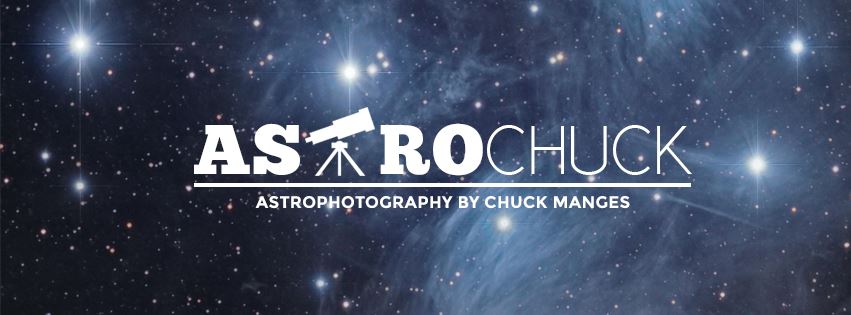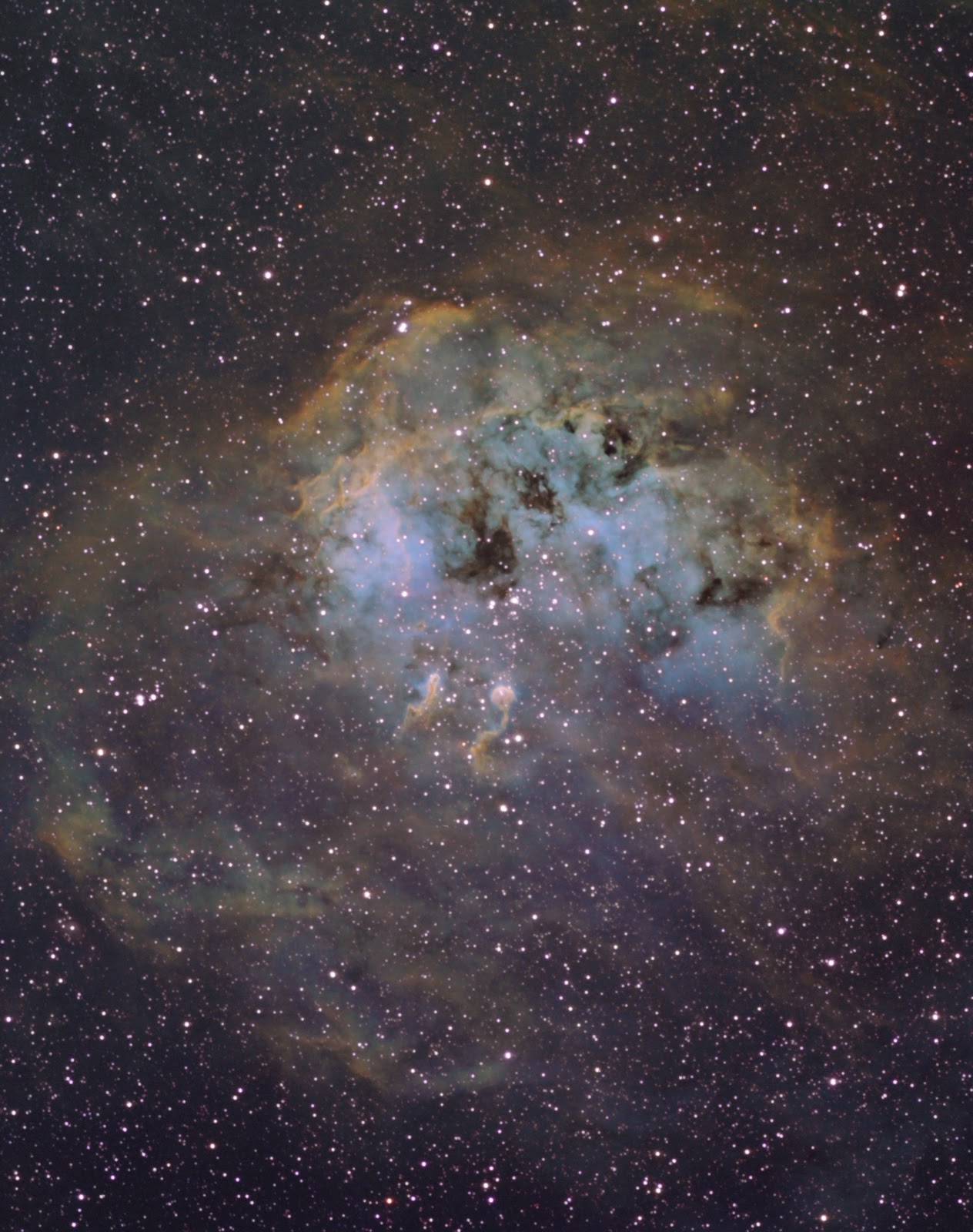I started by collecting Luminance filtered images of M45, the Pleiades. In my last post, I had already done M45. http://astrochuck.blogspot.com/2014/11/hyperstar-imaging.html
My intention was to capture more of the surrounding dust with a mosaic. Each panel was hand assembled in Photoshop CS6. The entire image is 2.54x2.29 degrees of the sky. It originally measured 6286x5819 pixels and was 209MB!
6 panels- 7x60 seconds for Luminance, 5x60 seconds through each RGB filter.
6 Panel Luminance Layer- (42 minutes total)
6 Panel Mosaic with RGB (2h 12m total)
A project like this would have taken me several clear nights to complete and close to 24 hours in images, pre-HyperStar. This accessory has been one of the best AP purchases I've made! A little over 2 hours for a 6 panel mosaic!Annotated version on Astrometry http://nova.astrometry.net/user_images/454364#annotated
I moved from the 6 panel mosaic to NGC2264, the Cone Nebula. 17x60 seconds for Luminance, 15x60 each through RGB filters. 1h 2m total
Original image cropped
I ended the "great night of astrophotography" at 3am. I had 192 images to process.....I didn't want to overdo it :)










